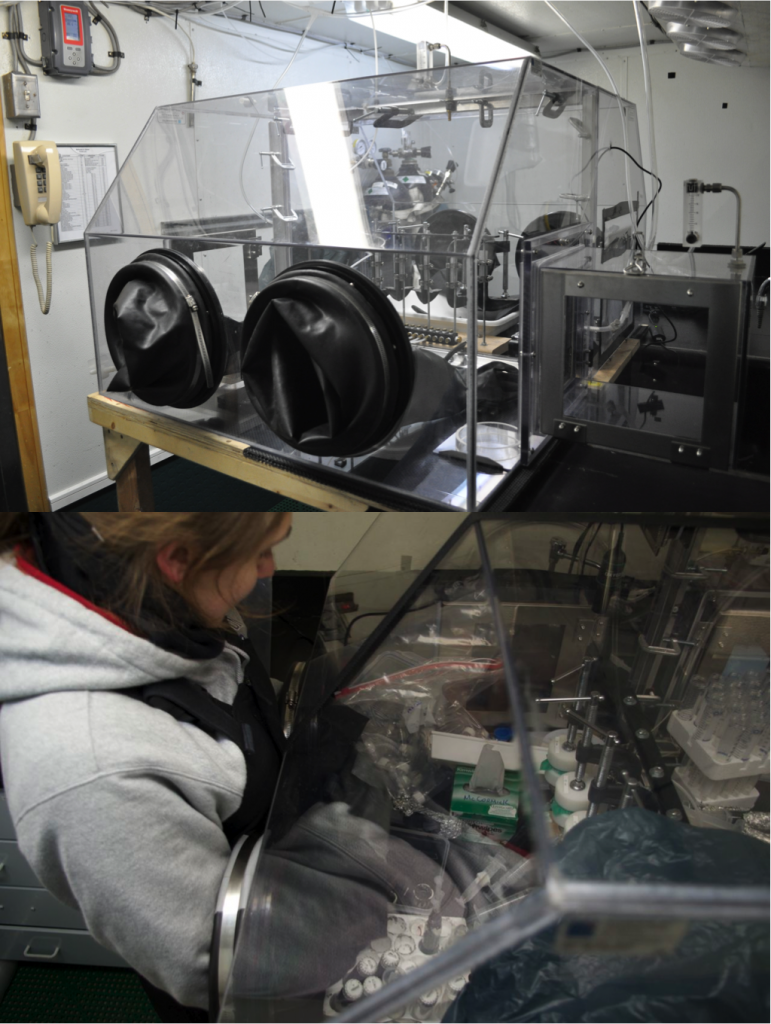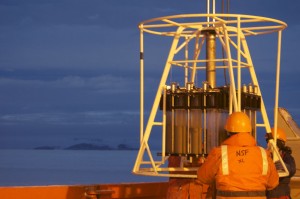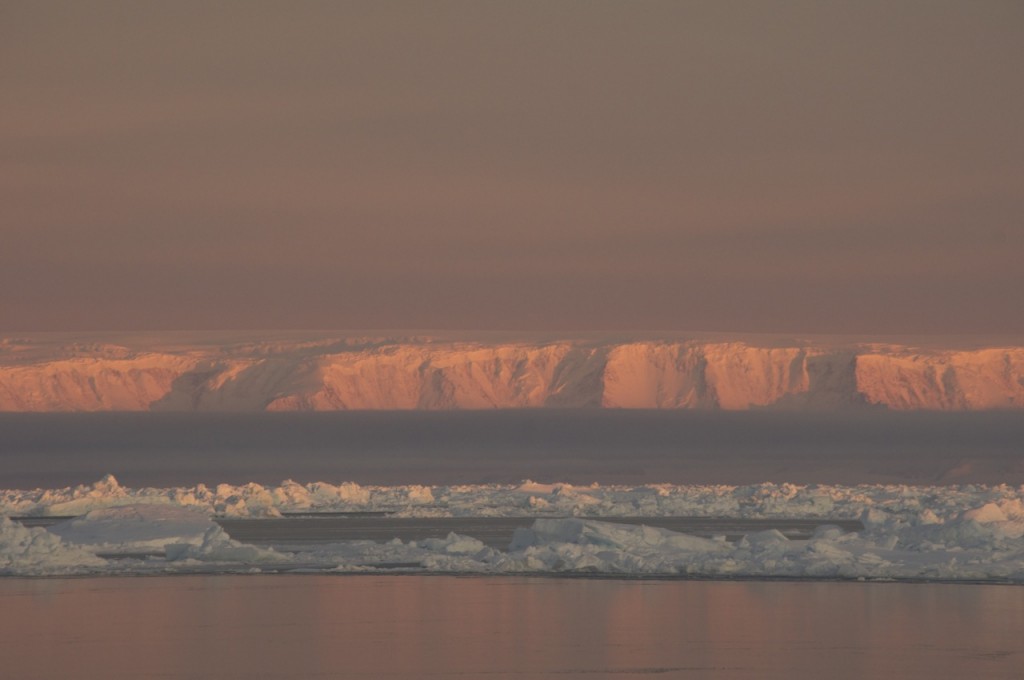Megumi Shimizu is a graduate student aboard the RVIB Nathaniel B. Palmer to collect sediment samples near Antarctic Peninsula as a part of the LARISSA project. She is interested in microorganisms and biogeochemistry of marine sediments; how the metabolism of microorganisms interact with the surrounding environment and the chemical components in sediments. See her first update here.
 Are you playing with mud on the research vessel?
Are you playing with mud on the research vessel?
Some people on the ship joked when they saw me processing my sediment core. Yes, I’m playing with mud in Antarctica. Sampling sediments can tell us a lot, not only what happened across geologic time scales, but also what kind of organisms are living in the sediment, microbiology, and the geochemical conditions. We are serious about collecting mud and playing with mud.

Nathaniel B. Palmer has three pieces of equipment to collect sediment; the megacore, kasten core, and jumbo piston core. The length you can reach below seafloor is different, 40cm, 1.5 to 6m and 24m respectively. Megacore is more suitable for biological studies since it preserves the sediment-water interface better than kasten core and jumbo piston core. Geological studies prefer Kasten core and jumbo piston core so that they can get older data from the sediment.
For my microbial lipid biomarker study, I’m taking samples from the megacore and kasten core. Along with microbial lipid and DNA, our team is collecting sediment and porewater (the water in pore spaces of sediments) to analyze geochemical properties of sediments, such as methane, sulfate, sulfide, and dissolved inorganic carbon. To maintain the condition of the sediments as close as the real environment, the sediment cores are processed under the condition of cold (~0C degree) and anoxic (no oxygen). How to make that condition? We have a special room called “The Little Antarctica”, on the ship, which is a big refrigerator containing glove box. A glove box is the transparent container with two pairs of gloves. The inside of the box is kept practically anoxic (less than 1% of oxygen. Atmospheric oxygen is ~20%).

To maximize the efficiency of sampling (40days in our case), science members are assigned to day shift or night shift. Unless the sampling needs sunlight, samples can come on the deck anytime. Sediment sample is one of those that can be up on deck at 3am. Marine technicians who are the specialists of handling sampling equipment on the deck, and science members work together to recover the equipment.
Like other research vessels, we all have to be aware of the danger of the back deck: heavy equipment, wires and so on. In addition, we are in Antarctica. 3am on the deck, the temperature often goes down around -20C and wind-chill -40C. We all have to wear vivid orange color float coats or mustang suites, layers of gloves, steal toe shoes and hard hats.
As a night shift person, I work from midnight to noon. Don’t worry about my meals. We have fourth meal called midrat served from 11:30pm to 12:30am in addition to breakfast, lunch and dinner. On shift time, I work for sampling or sample processing in the lab or in the little Antarctica. The ship also has a gym and lounge space so that we can relax after work by watching movies or playing foosball if you have time. My favorite way to refresh is to see the sunrise from the back deck. If I got tired after hours and hours or days and days of sample processing, I can just hop out to the deck (of course with a float coat and a hard hat).
The spectacular view of Antarctica charges my energy to work more!
